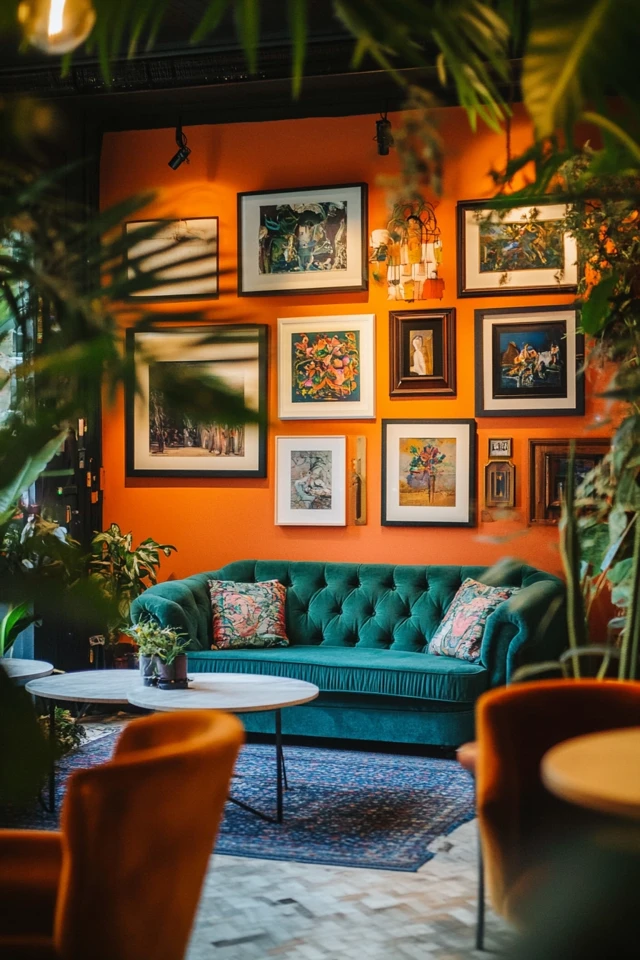A gallery wall is one of the most versatile and personal ways to decorate a room. It’s not just about filling up empty wall space—it’s about creating a curated collection that tells your story and reflects your personality. When done right, a gallery wall can transform a plain, boring wall into a stunning focal point that feels dynamic, layered, and intentional.
I remember the first time I attempted a gallery wall. I was so excited that I threw together every art print and photo I had, without a plan. The result? A cluttered, mismatched mess that didn’t make any sense. But after a bit of trial and error (and a lot of measuring), I finally cracked the code. Now, styling gallery walls has become one of my favorite parts of interior design!
In this guide, I’ll share everything I’ve learned about creating a beautiful gallery wall that complements your aesthetic room, from layout tips to frame choices and finishing touches.
Why Gallery Walls Work in Aesthetic Rooms
Gallery walls are perfect for aesthetic rooms because they:
- Personalize Your Space: They’re an opportunity to showcase what matters most to you—whether that’s art, photography, or meaningful mementos.
- Add Visual Interest: The mix of shapes, sizes, and colors creates a dynamic, layered look.
- Maximize Wall Space: They’re ideal for making use of large, blank walls that might otherwise feel empty.
1. Choose a Theme for Your Gallery Wall
A cohesive theme ties your gallery wall together and keeps it from looking chaotic.
- Color Palette: Stick to a specific set of colors for your artwork and frames to create a harmonious look.
- Subject Matter: Focus on a specific type of content, like abstract art, nature photography, or inspirational quotes.
- Mixed Media: Combine prints, photographs, and 3D objects like woven wall hangings or small mirrors for a tactile, eclectic vibe.
2. Plan Your Layout
Before you start hammering nails into the wall, plan your layout carefully.
- Lay It Out on the Floor: Arrange your pieces on the floor first to get a sense of how they’ll look on the wall.
- Use Paper Templates: Trace each frame onto paper, cut them out, and tape the paper templates to the wall. This helps you visualize the arrangement without committing right away.
- Experiment with Spacing: Aim for 2-3 inches of space between frames for a balanced look. Too much or too little space can make the wall feel off.
Popular Layout Styles:
- Symmetrical Grid: Perfect for minimalists, this layout features evenly spaced frames in a clean grid pattern.
- Asymmetrical Collage: For a more eclectic vibe, mix different sizes and orientations of frames in a freeform arrangement.
- Central Anchor: Start with one large piece in the center and build smaller pieces around it for a dynamic, balanced look.
3. Mix Frame Styles and Sizes
The frames you choose can make or break the overall look of your gallery wall.
- Uniform Frames: If you want a sleek, modern look, stick to frames that are all the same color and material (e.g., black metal or natural wood).
- Mixed Frames: For a more eclectic aesthetic, mix different frame styles, like vintage wood, ornate gold, and minimalist white.
- Varying Sizes: Include a mix of large, medium, and small frames to create visual interest and dimension.
4. Incorporate Non-Traditional Pieces
Gallery walls don’t have to be all prints and photos. Add depth and personality by including unique elements:
- Mirrors: A small mirror can break up the wall and add a touch of elegance.
- Wall Sculptures: Consider adding a 3D element like a macramé hanging, woven basket, or decorative plate.
- Shelves: Floating shelves can hold books, plants, or small sculptures, adding texture and depth to the display.
- Letter Boards: Use a letter board or neon sign for a fun, customizable touch.
5. Balance Colors and Textures
To keep your gallery wall cohesive, balance bold and subtle elements.
- Color Distribution: Spread out similar colors evenly across the wall to create a balanced composition.
- Textures: Mix glossy photos, matte art prints, and textured objects like fabric or woven décor.
- Neutral Anchors: Use neutral frames or backgrounds to ground the design and prevent it from feeling too busy.
6. Add a Pop of Personality
Your gallery wall should feel like you. Incorporate personal touches to make it special.
- Family Photos: Mix in snapshots of your loved ones to add warmth and meaning.
- Travel Souvenirs: Frame postcards, maps, or small items from your favorite trips.
- Quotes or Lyrics: Include typography prints with your favorite sayings, song lyrics, or motivational quotes.
7. Consider Lighting
Lighting can enhance the impact of your gallery wall.
- Natural Light: Position your gallery wall near a window to take advantage of natural light.
- Picture Lights: Install wall-mounted picture lights for a sophisticated, museum-like effect.
- LED Strips: Use LED strip lights or fairy lights to highlight the display and add a cozy vibe.
Picture Gallery
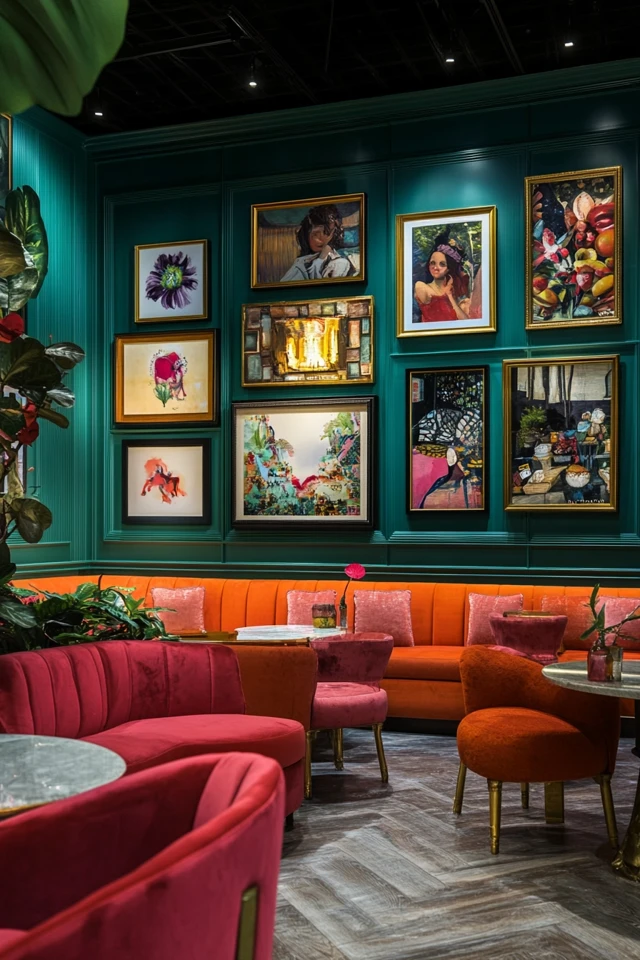

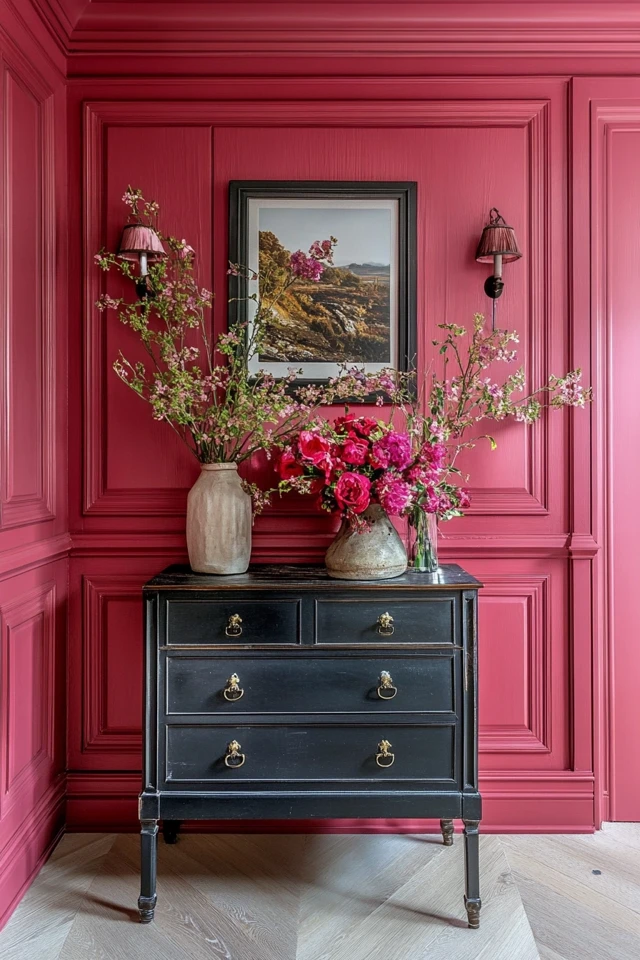
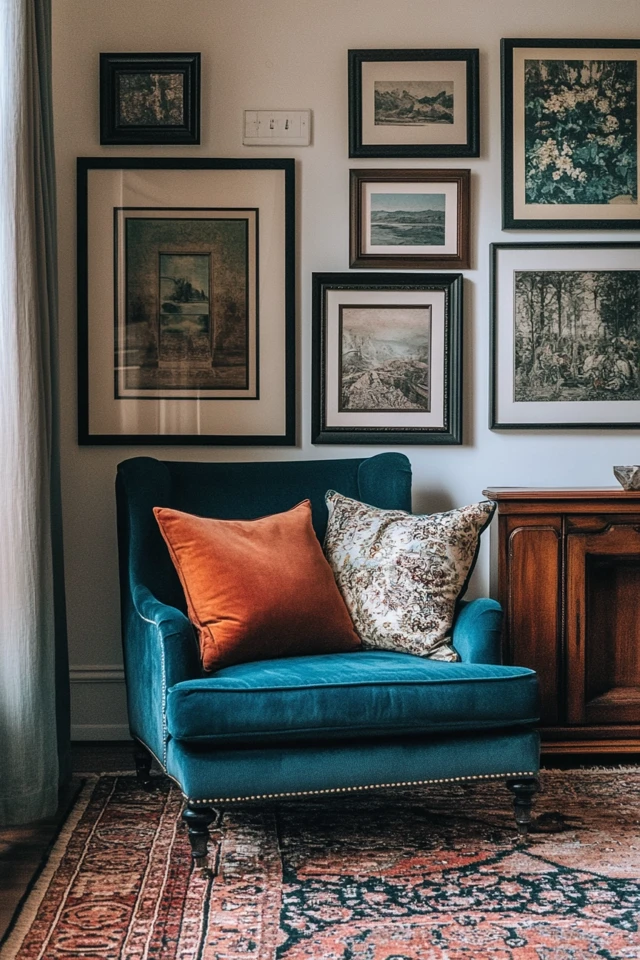
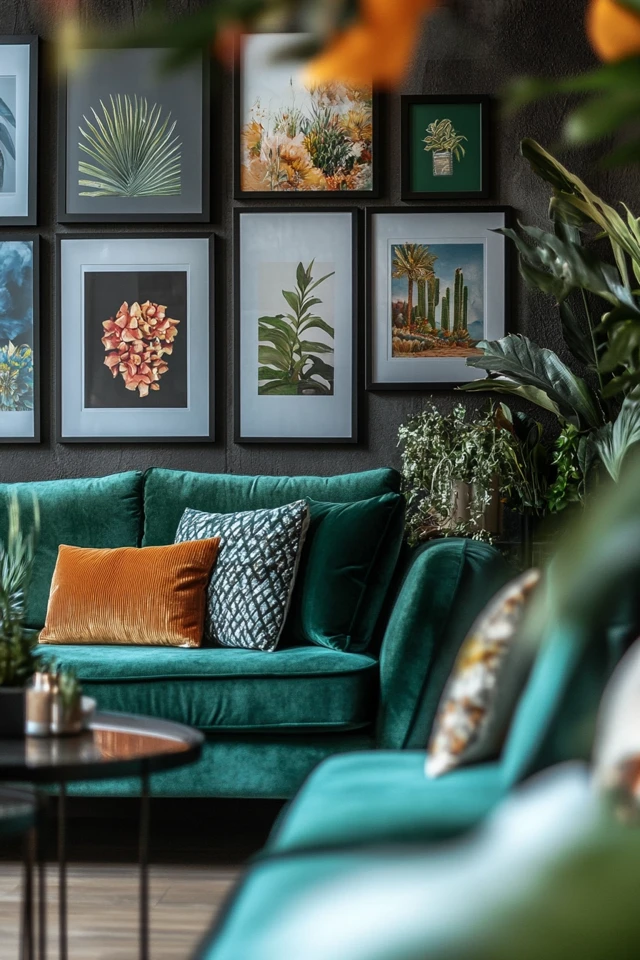

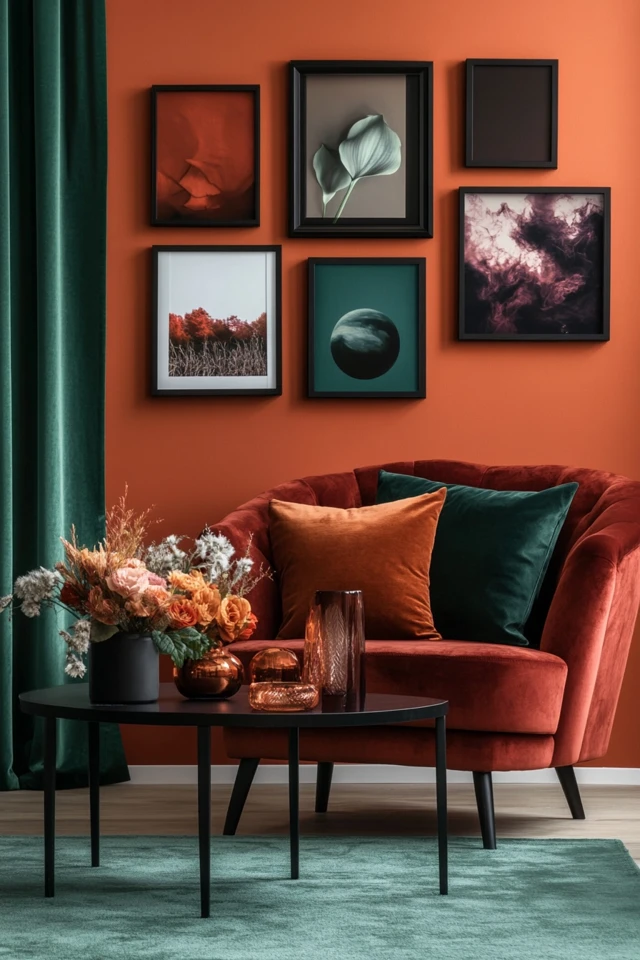
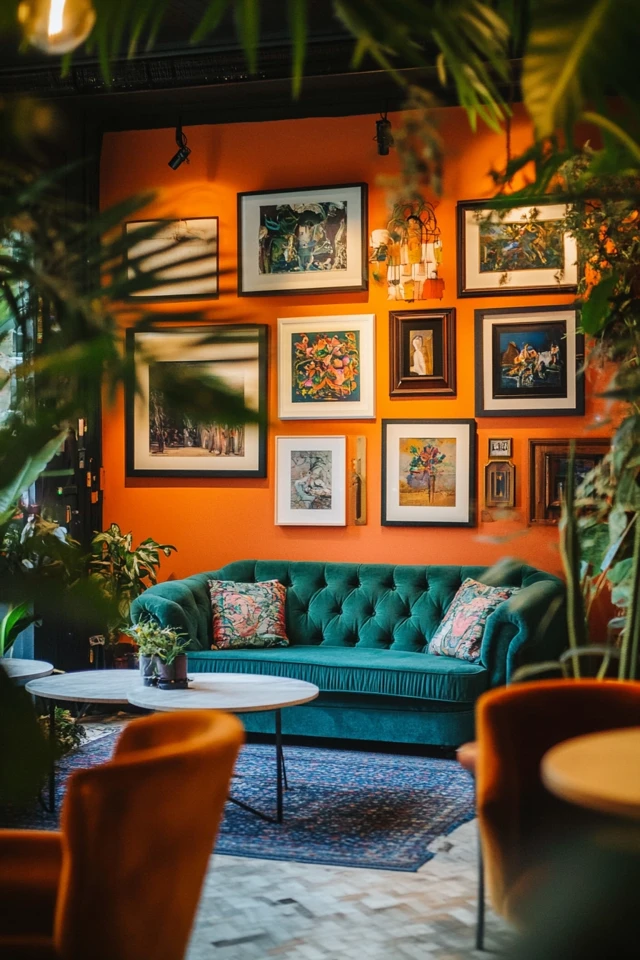
Common Mistakes to Avoid
1. Overcrowding the Wall
Too many pieces can make your gallery wall feel chaotic. Stick to a curated selection that fits the size of the wall.
2. Ignoring Scale
Mixing frames that are all the same size can feel flat. Incorporate a variety of sizes for a more dynamic look.
3. Skipping the Layout Plan
Jumping straight into hanging frames without a plan often leads to uneven spacing or awkward compositions.
4. Forgetting About Scale and Placement
Avoid placing a gallery wall on a small wall in a large room—it will feel out of proportion. Similarly, don’t let the frames feel too high or low—eye level is the sweet spot.
Final Touches
1. Step Back and Adjust
Once everything is up, step back and evaluate the overall balance. Don’t be afraid to adjust spacing or swap out pieces to get it just right.
2. Keep Evolving
Gallery walls don’t have to be static! Add or swap out pieces over time to keep it fresh and reflective of your current interests and memories.
Conclusion
A gallery wall is more than just decoration—it’s a statement about who you are and what inspires you. With a little planning and creativity, you can turn any blank wall into a personalized masterpiece that’s both aesthetic and functional.
Remember, there’s no one-size-fits-all formula. Whether you’re going for a minimalist grid or an eclectic collage, the best gallery walls are the ones that feel authentic to you. So, grab your favorite prints, mix in some unique pieces, and start curating a display that brings your aesthetic room to life!
FAQs
1. How do I choose the right wall for a gallery wall?
Select a wall that’s visible and has enough space for your desired layout. Large, blank walls or spaces above furniture like sofas or beds work well.
2. How do I hang a gallery wall without damaging the wall?
Use removable adhesive hooks, picture-hanging strips, or command strips to avoid putting holes in the wall.
3. What’s the ideal spacing between frames?
Aim for 2-3 inches of space between frames for a balanced and cohesive look.
4. Can I include non-framed items in my gallery wall?
Absolutely! Items like mirrors, wall sculptures, or floating shelves can add depth and variety to your gallery wall.
5. How can I update my gallery wall over time?
Swap out artwork, add new pieces, or rearrange the layout to keep it fresh and reflective of your evolving style.

